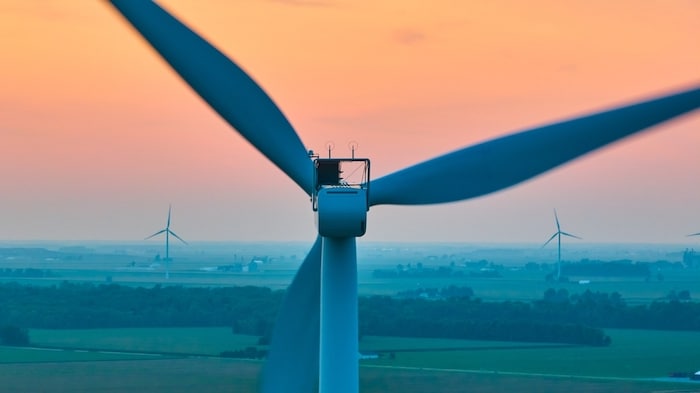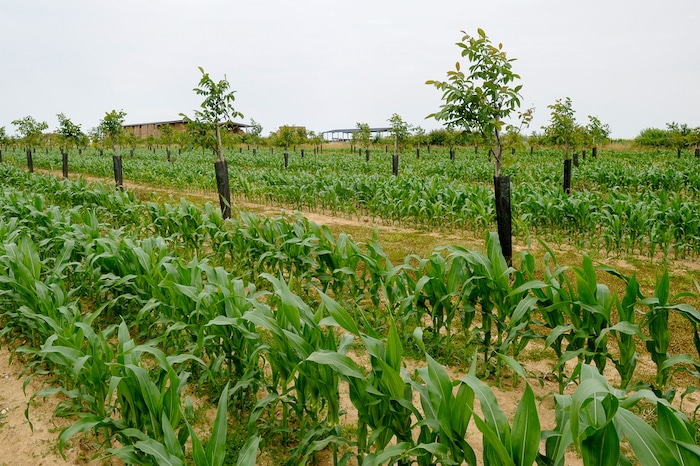
Green Farming Explained
Green farming is a holistic and sustainable approach to agriculture that minimizes negative impacts on the ecosystem by prioritizing environmental health, resource efficiency, and biodiversity conservation.
Let’s break down the definition and explain the key points:
- Green farming is harmonious with natural ecosystems, without chemical pesticides that can harm beneficial organisms. It means organic agriculture methods don’t deplete natural resources or harm biodiversity.
- Sustainable agriculture minimizes soil disturbance, reduces erosion, and improves soil health. Some farmers also adopt renewable energy sources to decrease greenhouse gas emissions. At the same time, the usage of resources is optimized to minimize waste and environmental impact.
- Some organic farming practices exclude using genetically modified crops to maintain natural biodiversity.
Benefits of Green Farming Practices
- Biodiversity preservation
- Reduced soil and water pollution
- Improved soil quality
- Reduced carbon footprint
- Enhanced crop diversity and resilience
- Healthier food and reduced chemical residues
- Community well-being
- Long-term sustainability
Importance of Green Farming
Green farming methods can impact environmental conservation, economic sustainability, and social well-being, especially considering current food systems are responsible for approximately 30% of greenhouse gas emissions.

Environmentally, green farming protects diverse ecosystems and maintains soil fertility through cover cropping, beneficial microbes, green manure, organic matter integration, and no-tillage practices. By cutting down on pesticides and synthetic fertilizers, green farming also minimizes the risk of pollution, protects water quality, and ensures the long-term health of the whole community. Moreover, green farming supports climate change mitigation by reducing greenhouse gas emissions and expanding soil’s carbon sequestration capabilities.
Economically, green farming methods offer cost savings when farmers optimize resource use. Organic agriculture reduces dependency on expensive inputs. Plus, it creates market opportunities as consumer demand and preferences increasingly favor sustainably produced food.
7 Steps to Transform Your Green Farming Practices
Step 1. Assess your current practices
- Analyze crop choices, soil structure and management, water consumption, and usage of pesticides and fertilizers.
- Look for areas where you can implement more sustainable approaches without disrupting your operations.
Step 2. Develop a sustainable farming plan
- Include goals for sustainable farming, a timeline for gradual change, specific crop locations on your arable land, and any challenges and setbacks that could slow you down.
- Start with accessible green farming practices, like crop rotation, cover cropping, agroforestry, and integrated pest management.
- Evaluate the benefits of integrating livestock on your farm.
Step 3. Transition to organic practices
- Incorporate organic matter, green manure, natural fertilizers, and compost into the soil to improve its health.
- Plant multiple crops simultaneously on the same piece of land. Implement companion planting strategies to deter pests, attract beneficial insects, and improve nutrient uptake. For example, planting nitrogen-fixing legumes alongside other crops can enhance soil fertility.
- Plant cover crops post-harvest (in late summer-early fall).
- Use organic methods for pest control and disease management.
Step 4. Implement water conservation techniques
- Invest in drip or precision irrigation.
- Build a rainwater harvesting system to capture and store water for agriculture.
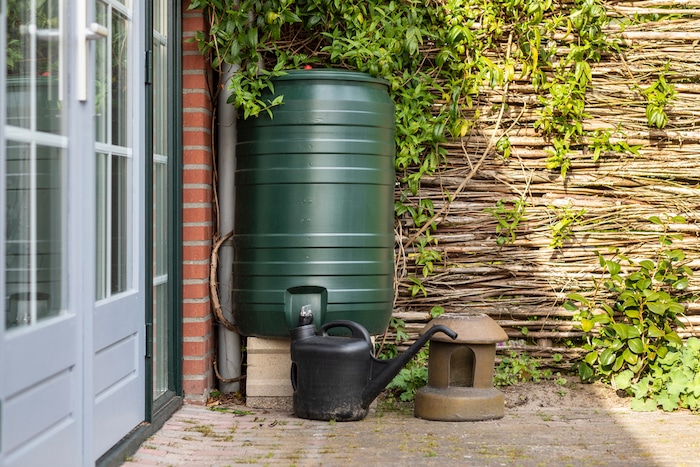
Step 5. Optimize energy use and embrace renewable energy sources
- Optimize machinery use and adopt energy-efficient technologies.
- Power your operations with renewable energy sources like solar panels or wind turbines.
Step 6. Adopt agroforestry practices
- Plant trees or shrubs along the edges of fields to create windbreaks and shelterbelts.
- Plant trees or shrubs along watercourses or water bodies to protect water quality and enrich habitat for aquatic life.
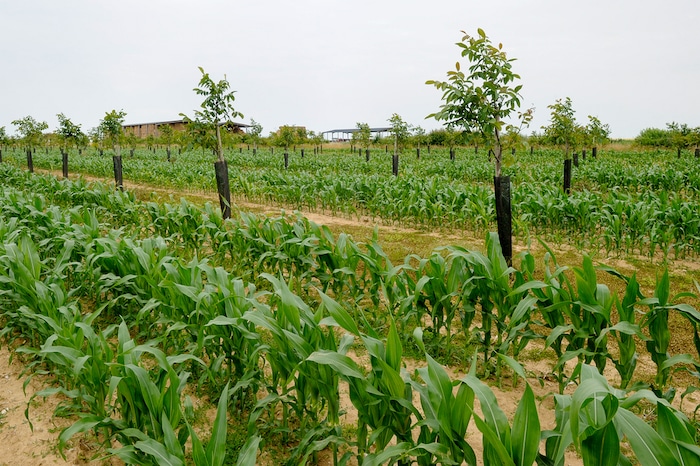
Step 7. Meet organic standards and participate in organic certification programs
- Make your farm eligible for certifications for organic farming practices.
- Aim for certifications like USDA Organic, GlobalG.A.P., Friend of Earth (FOE), and other regional organic certifications.
Green Farming Technology
Green farming technology has expanded to meet the evolving needs of organic agriculture. We’re looking at innovative solutions to improve agricultural practices with low environmental impact.

Here are some of the most popular green farming technologies:
- Precision farming systems (GPS technology, sensors, and data analytics)
- Drones for crop monitoring
- Automated and electric tractors and machinery
- Smart irrigation systems
- Biodegradable mulch
- IoT-enabled livestock monitoring systems
- Renewable energy sources (solar panels, wind turbines, and biogas)
- Mobile apps for farm management
- Composting and anaerobic digestion systems
Precision farming technologies, automation, and drones contribute to improved productivity, allowing organic farmers to meet the demand for organic food. Furthermore, advanced irrigation systems and data analytics help reduce environmental impact by optimizing resource use and minimizing the need for chemical inputs.
In peak season, technology can address labor shortages and alleviate the physical demands on farmers, particularly in large-scale operations.
And the shift to green technology helps mitigate climate change. Traditional farm machinery powered by fossil fuels contributes to greenhouse gas emissions and air pollution. On the other hand, electric tractors, harvesters, and other equipment offer a more sustainable alternative without compromising operational efficiency.
Monitoring and Adapting
Sensor technologies in organic farming help farmers understand soil health, nutrient levels, and weather patterns. They empower organic farmers with data to implement proactive measures for sustainable farming.
Farmers gain a comprehensive understanding of the soil’s structure and adjust irrigation schedules by continuously monitoring soil conditions. Additionally, the information garnered from these sensors aids in identifying potential soil erosion or degradation issues, guiding proactive measures to preserve soil fertility.
Sensors also monitor nutrient levels within the soil, which is vital when relying exclusively on natural fertilizers. With accurate and timely data on nutrient concentrations, farmers can tailor fertilization strategies for increased productivity.
On the other hand, weather sensors collect data on temperature, humidity, and precipitation, helping farmers protect their crops from adverse weather events and make informed decisions for planting and harvesting schedules.
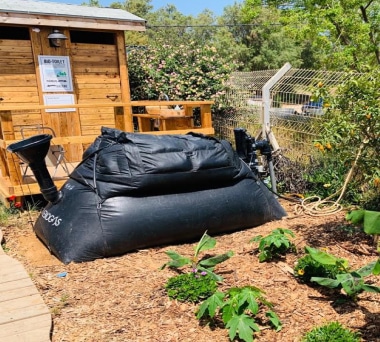
HomeBiogas 2
Designed for the next generation of green-building innovation.
Examples of Green Farming and Its Benefits
Vertical Farming
Vertical farming cultivates crops in layers or vertically inclined surfaces, often in controlled indoor environments. It maximizes land use by growing crops upward, making it ideal for urban environments with limited space.
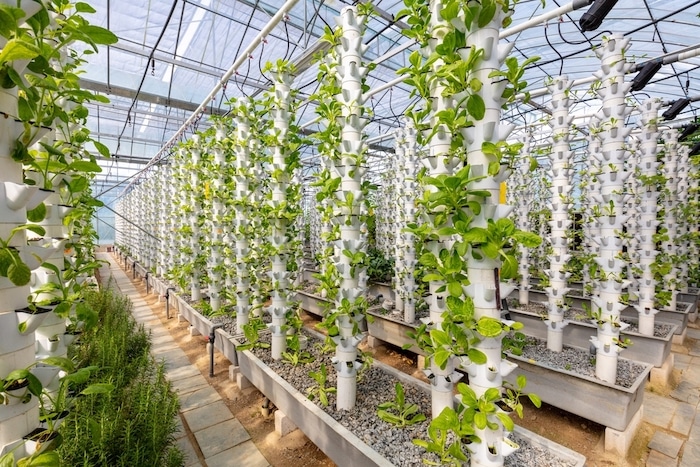
How it works:
- Vertical farms use shelves or towers to stack multiple layers of crops, utilizing hydroponic or aeroponic systems.
- Environmental factors such as temperature, humidity, and lighting are closely monitored to create optimal growing conditions.
- Vertical farms can operate regardless of external climate conditions, enabling continuous and consistent crop production.
Benefits:
- Vertical farming allows for higher crop yields per square meter than traditional horizontal farming.
- With efficient resource use and minimal pesticide usage, vertical farming can be more environmentally sustainable than conventional agriculture.
Hydroponics and Aeroponics
Hydroponics and aeroponics are soilless farming methods where plants receive nutrients directly through water solutions (hydroponics) or mist (aeroponics). Both methods significantly reduce water usage compared to traditional soil-based farming, as water is recirculated in closed systems. Moreover, they allow for precise control over nutrient concentrations, promoting optimal plant growth.
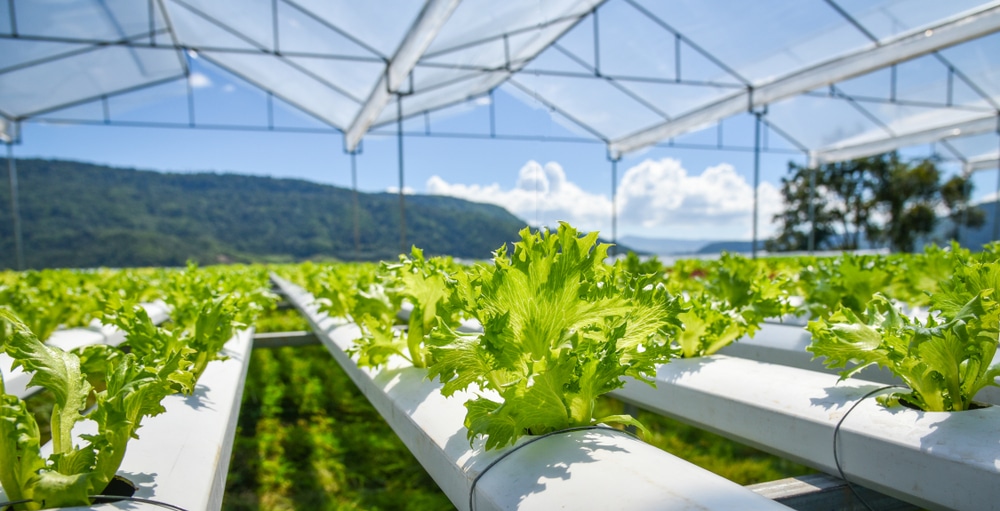
How it works:
- Hydroponics involves suspending plant roots in nutrient-rich water solutions.
- Aeroponics mists nutrient-rich solutions onto plant roots suspended in the air, promoting efficient nutrient absorption.
Benefits:
- Due to direct access to nutrients, plants often grow faster in hydroponic and aeroponic systems.
- Soilless systems can function in various environments, including urban areas.
Aquaponics Systems
Aquaponics integrates fish farming (aquaculture) with hydroponics, creating a symbiotic ecosystem where fish waste fertilizes plants, and plants filter and purify the water for the fish.
How it works:
- Fish tanks are connected to hydroponic beds or towers.
- Fish waste produces ammonia, which is converted into nitrates by bacteria. Plants absorb these nitrates as nutrients, filtering the water, which is then recirculated to the fish tanks.
Benefits:
- Aquaponics promotes resource efficiency by recycling water and nutrients.
- It yields fish and crops, diversifying the produce and income for farmers.
Smart Greenhouses
Smart greenhouses are structures equipped with automated systems for climate management. They use sensors and automation to control temperature, humidity, and lighting conditions, ensuring ideal crop conditions. Like vertical farming, smart greenhouses enable year-round cultivation, independent of external weather conditions.
How it works:
- Sensors monitor environmental conditions, and automated systems adjust factors like temperature, humidity, and lighting accordingly.
Benefits:
- By maintaining optimal conditions, smart greenhouses enhance the quality of organic crops.
- Automation minimizes resource wastage, making smart greenhouses more environmentally friendly than conventional agriculture.
Meet HomeBiogas – Your Green Farming Solution for Renewable Cooking Gas & Organic Fertilizers
HomeBiogas systems are small-scale biogas digesters that convert organic waste into biogas and liquid fertilizer through a natural process known as anaerobic digestion. They can process food scraps, crop residues, animal manure, and other types of agricultural waste.

Turning organic waste into energy aligns with your green farming objectives in more than one way:
- You get to recycle waste from agricultural activities.
- You have a user-friendly renewable energy source.
- You produce organic fertilizer that improves soil fertility and supports crop growth.
A HomeBiogas system includes the biogas digester, the biogas holder, a gas outlet, filters, piping that connects the gas holder to the dedicated biogas stove, and an outlet for the liquid fertilizer. The kit has clear instructions for a straightforward, cost-effective transition to sustainable agriculture waste management.
Depending on the size of the biodigester, you can process up to 4.5 gallons of organic waste and produce 6 hours of biogas for cooking daily, translating into 6 tons of carbon dioxide emissions saved every year.
Summary
Planning carefully, using organic fertilizers, and implementing a series of organic farming methods, like cover crops, green manure, or crop rotation, will keep your farm environment in harmony with nature.
And everyone will see the benefits. Your farm will thrive as you grow healthy plants and livestock and produce organic food of exceptional nutritional quality. Everything while maintaining a low environmental impact because all your actions align with natural processes.





